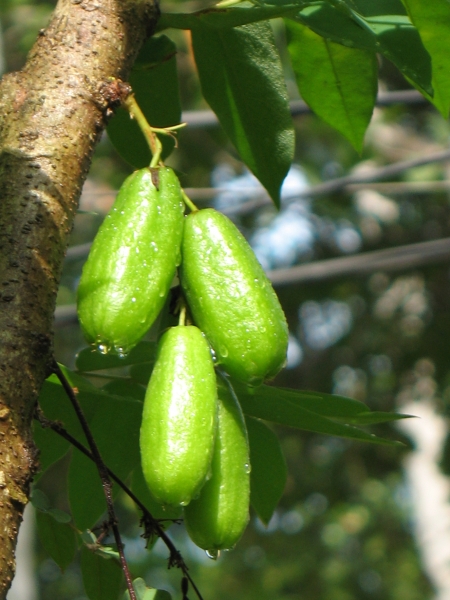Bilimbi
Averrhoa bilimbi$34.00 ($29.00-$79.00 choose a size)
When will it be in Stock?
We previously had the most to buy in Jan and Feb. With limited quantities for sale in other months. They are unlikely to be available in May and Jun. Special Note: This plant is in the top 25% of plants customers are wanting to know about. It is very unlikely that you will be able to purchase this plant unless you click above to be notified when it is in stock again. Please expect a delay on this item as we notify those who have waited the longest .
Specifications of Bilimbi
Preferred Climate TropicalLearn About Climate Zones
Grown From SeedlingLearn About Propagation Methods
Max Height (when in the ground with good conditions) +10m
Plants required to Pollinate 1 (Self Pollinating)Learn about Pollination
Can it Handle Frosts? Likes Temps above 5deg
Amount of leaves in Winter? All Leaves (Evergreen)
Quarantine Restrictions to these Areas WA
Water Requirements Frequent Watering
Time to Fruit/Flower/Harvest 5+ Years
Sun or Shade Full (Sun:80%-100%)
Preferred Soil Type Good Drainage
Soil pH Neutral (6.6-7.3pH)
Fruiting/Harvest Months January, February, March, April, May, June, November, December
Create a Filter to find similar plants
Customers also bought
These plants are often purchased together. Also check plant information for suitability in your orchard.
Amla
$17.75 ($14.90-$79.00 choose a size)
Custard Apple - Golden Emperor
$89.00 ($89.00-$99.00 choose a size)
Persimmon - Flat Seedless (A)
$79.00 ($79.00-$79.00 choose a size)
Yuzu - Grafted
$44.00 ($44.00-$99.00 choose a size)
Soursop
$34.00 ($17.75-$49.00 choose a size)
Wampee - Yeem Pay
$49.00 ($49.00-$79.00 choose a size)
Customer Tips & Reviews Bilimbi
Bilimbi
In my place in India (Kerala), it is grown abundantly and a popular household medicine for controlling blood pressure.
Cairns, QLD
Bilimbi
The fruit are used in sweet and sour dishes and raw they look like pickles and taste like very green carambolas.Trees are tougher than carambolas.
Nsw Sydney, NSW
Bilimbi
Dry in the sun, with salt on itthen make an achard by frying garlic ginger and chiliesOil is addedVery nice condimentkeep for months
Constitution Hill, NSW, Australia
Bilimbi
Bilimbi best for cooking fish,slise fruit thin,chops garlick,onion,lemongras thenwraped infoil,then grill.
Wahroonga , NSW
Bilimbi
Bilimbis can be dried and kept for months in tightly lid containers. Cut fruits in half and place them under the sun for a few days on a cloth. They will shrink and turn blakish when dried. They can then be used as part of your normal dish
South-asia, DHAKA
Bilimbi
You may add picture & also add medicinal uses in a detail.Thanks because it gives me some information that I have need.


































